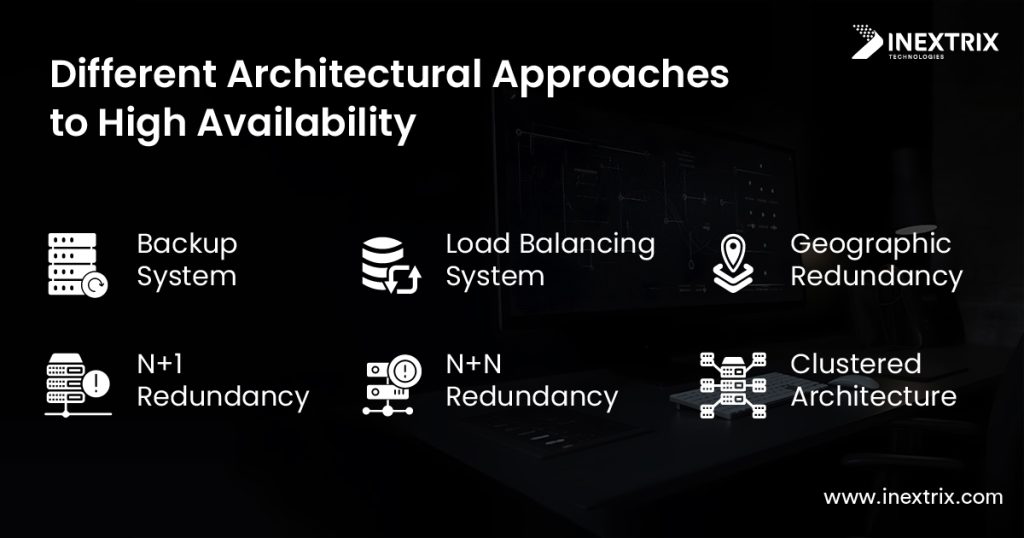In the VoIP platforms realm, uninterrupted communication is a fundamental business need. Therefore, it has to be part of even a basic VoIP development project. Even if it is highly crucial in the telephony industry, several businesses avoid giving any attention to this basic need of a VoIP business or any company using a VoIP based communication tool. To establish the facts that prove the importance of high availability solutions in the VoIP industry, we have crafted this important guide on high availability in the VoIP industry. We will cover all major facts to give you the required insight on this subject matter. So, without any further ado, let’s jump into this important subject matter to perceive the worth of an HA (High Availability) solution.
1. What is High Availability in VoIP?
To jump in and discuss the importance of high availability solutions in the industry, it is necessary to learn what the concept is all about. Moreover, we will delve deeper to check how HA solutions can be part of any company offering VoIP development services.
In the VoIP telephony segment, HA solutions signify a robust infrastructure and strategy. The major goal for implementing an HA system is to ensure uninterrupted accessibility and functionality of VoIP solutions to keep communication ongoing. Besides the normal functional environment, even during the situation of disruptions and failure, VoIP services have to be accessible.
Transform your communication infrastructure with our advanced VoIP development services.
Certainly, this is not part of the development process. However, it is all about creating the right infrastructure and architecture of the software, hardware failover mechanism, and similar components to ensure the system should not stop operating in any situation of disaster or failure.
Even if it is not part of the development processes, development companies offering custom VoIP development offer deployment services to benefit businesses that achieve high availability systems. Therefore, if you are using development services, you can discuss with your partner to provide you with the required support to deploy an HA system that can guarantee uptime SLA (Service Level Agreement) up to 99.98%. Even if you are not using development services and buying or renting VoIP telephony services, it is necessary to discuss the uptime SLA from the provider. Ideally, it has to be more than 92% to give you a seamless communication experience and even to your clients.
2. Types of High Availability Architecture

There are several jargon related to HA solutions. Moreover, it is necessary to understand HA is not an exclusive concept related to the VoIP industry. Rather, high availability solutions are in use in almost all industry verticals. Therefore, the concept of HA architecture is common across industries. Moreover, as we have discussed earlier, the HA solution is not part of the development process. It is the way you create architecture for deployment of your system on servers or the cloud to make sure in case any of the components fail, your backup system takes over to keep functioning and providing continuity.
To create the right HA architecture, you need to first understand the types of high availability architectures available for you.
Backup System
- It is also known as active-passive architecture because of its functional model. Moreover, it is referred to as a failover architecture.
- The system architecture will create a mirror system.
- The main system will manage VoIP operations for all requests while the backup system will stay idle.
- In case of failure, the second system takes over. Certainly, it makes sure all operations are now routed to the redundant system. Therefore, it is known as a backup system.
Load Balancing System
- It is called active-active architecture because it creates two mirrors of the same system with all components.
- Ideally, the primary system will work constantly to manage routine requests and VoIP traffic.
- Unlike a backup system, it does not wait for the primary system to fail before taking over. In fact, in case of increasing traffic on the main system, the backup system will take over to balance the load. In this case, both systems will actively manage requests and VoIP traffic effectively. As a result, the system does not fail due to an increase in load. Rather the load is distributed or balanced across systems.
Geographic Redundancy
- As the name suggests, it involves geographies in the process of creating redundant systems.
- Similar to other high availability architecture designs, it also involves the replication of system components like servers, data centers, and more.
- Interestingly, it distributes the system components across different geographies rather than putting them in the same location.
- This is the most powerful system to manage regional failures because you will always have a backup system in another region to keep your system up and running.
N+1 Redundancy
- Undoubtedly, this is one of the most commonly used system architectures to create an HA solution.
- The system architecture will create a single redundancy for all important components of the system. Simply put, unlike creating the whole system mirror, the components are deployed as independent units. Moreover, for each vital component such as FreeSWITCH, database, switch, router, etc., a redundant system is created.
- On the failure of the components, the backup component will take over to keep the system available and functional.
N+N Redundancy
- Ideally, it follows the same idea of creating backups for components as in the N+1 system architecture rather than creating the whole mirror system to manage failover or load balancing.
- Certainly, the major difference for this system is it creates multiple backups for a single component, which is why it is an N+N system. For example, there will be multiple instances of FreeSWITCH servers.
- Each component will stay in the standby process and whenever load is increased, it is equally passed to another component that is available as a backup.
Clustered Architecture
- Clustering creates a cluster of different system components that are united as a group, and they work as a single unit.
- Certainly, resources are shared across each node in the cluster.
- Each component is conscious of the other nodes in the cluster. Moreover, each cluster is built in a way that they can work in collaboration to equally and efficiently distribute workloads, share resources, and maintain high availability for services.
- Undoubtedly, it is the most popular type of system architecture to manage systems managing a high volume of calls such as a class 4 Softswitch.
- Interestingly, the added advantages of this system architecture are enhanced scalability, increased fault tolerance, and remarkable load balancing capabilities.
3. Why is it Important?

Generally, before commencing the VoIP development process, businesses discuss HA solutions and how to implement them. Certainly, this can help in choosing the right components and development methods for your project. For example, to create a clustered architecture, FreeSWITCH is an ideal candidate for custom VoIP development. Likewise, your development company can make suggestions and choose the right path for development. However, if you have not considered HA architecture prior then also there is nothing to worry about. Even after the development of the system, you can discuss and decide the right HA system for you and use it for your business.
If you are still wondering whether to invest in this redundant system deployment architecture or not, then you must cautiously read the major reasons discussed in this section. Certainly, you will learn the necessity of an HA system in your VoIP business.
3.1 Easy and Less Expensive in the Beginning
Undoubtedly, if you are just launching your VoIP solution, it will have zero data and minimum components. Therefore, it will become quite easy to create any type of system redundancy. Moreover, it will also become cheaper. You will need minimal hosting space even for a cluster architecture because your system requirement will not be that big. Gradually, as your business grows, your data and system will also grow. As a result, things will move systematically and gradually to give seamless transitions through different phases. This is the best way of making your system highly available and reliable.
In case you did not consider the implementation of HA while setting up your VoIP solution, don’t worry, sooner is better. Still, you can leverage all the advantages even if you have data rather than waiting for infinity when there are too many things to tackle while migrating to an HA solution.
3.2 Assures High Uptime SLA
In the VoIP realm, continuity is everything. Certainly, you are making money by offering round the clock services or reliable communication during office hours. The HA system ensures that you can guarantee uptime and availability of your offerings even during any type of disruption, disaster, or failure. Undoubtedly, this will bring several other business benefits for you.
3.3 Delight Clients
Anyone would like to bet on better services and experience. Several businesses are ready to pay more for more reliable services. With the right HA architecture, you can guarantee supreme services to delight your clients. This will also reduce customer concerns and put your business as a client-centric company that is tech-savvy and uses technology to benefit clients. Delighted clients will bring in several other advantages for your business like repeat business, referral leads, and more.
3.4 Prevent Financial and Reputation Losses
If you don’t have an HA system architecture, you will likely face failure for one reason or another. Even if it is not a frequent failure, it can appear as a nightmare for your business when you are not prepared to deal with it. Certainly, you may go blank or pull your hair while nothing is working. Unplanned failures or disruptions can lead to hours and hours trying to fix things. Moreover, you may end up losing some data or assets because you were not prepared for it.
So these are the major reasons to invest in the high availability of your VoIP solutions. If you are still facing any dilemma, then we suggest reading one more blog post covering vital facts. It shares what makes it necessary for a service provider to invest in an HA solution.
Despite all the efforts and investments, your system will stay down, and your services will get interrupted. As a result, you will face financial loss as you are not making money during the time of failure. Additionally, you may also lose the trust of your clients and get some level of reputational damage, too. Undoubtedly, it will lead to further loss of money and business.
3.5 Stay Future Proof
All VoIP businesses aim to grow. Surely, you are not taking a back step here, right?
When a business grows, you will need to manage more call traffic, customer accounts, routing requests, and more. Certainly, you will add more offerings, too. For example, if you are only offering wholesale VoIP services, you may use VoIP development services and add retail VoIP functionalities in your switch to capture more business and generate high revenue, too. To manage an expanding business, you need to stay prepared to handle failures professionally. We are talking about system failures. Investing in the right high availability solution will ensure your system is highly scalable and scale up with you effortlessly as your business grows.
Concluding Note
High availability architecture designs are designed to address different scenarios and requirements of VoIP businesses. Certainly, they provide the much needed reliability, scalability, and readiness to a business. Therefore, it is always recommended to invest in the right high availability solutions even if you are a small scale business. You can keep your system prepared for unforeseen disruptions. Moreover, you can bet on your offers to win more customers and to boost your growth rate. Unquestionably, there are several other advantages of using the right HA system architecture for your business as we have discussed in this blog post.
We have already benefited several VoIP providers and companies with our HA solutions. We can help your business in launching a new business with an HA system or migrating to a high availability solution. To learn more about our expertise in VoIP development and high availability solutions, contact us now.
